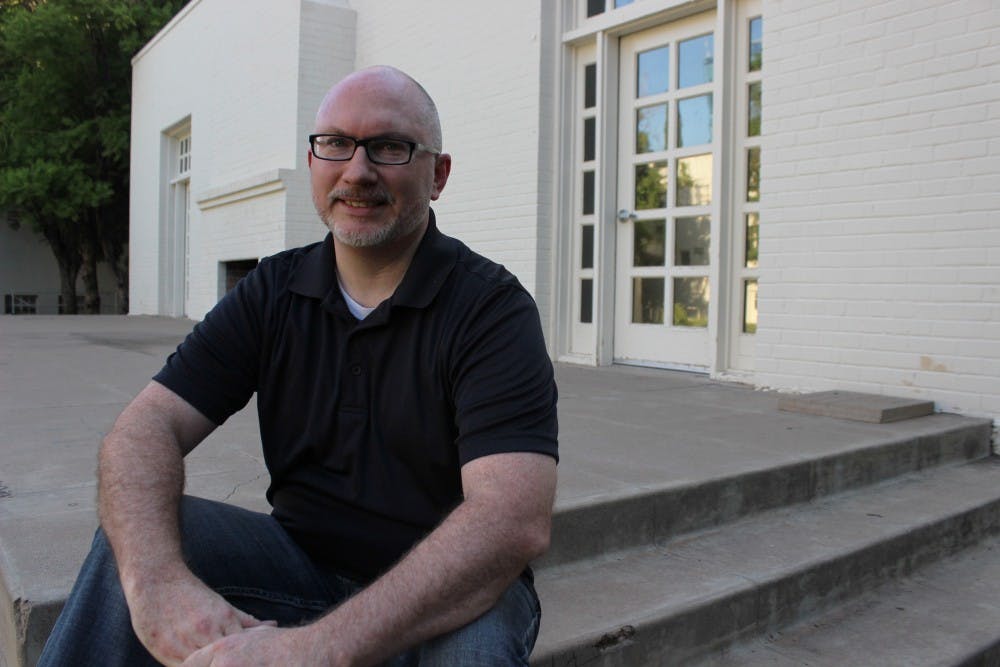A baby flails, cries and tugs at its mother’s shirt. She ignores the baby for a moment before turning an expressionless face toward the child.
This situation is defined as the “still-face” experiment that was used in ASU graduate student Eric Henley’s infant development presentation.
“There are things I know now at a level that I wish I would have known then … when they were 18 months old,” says Henley during his award-winning presentation of his “Toddler & Infant Parent Kit” (TIP Kit).
Henley recently won the Diane and Bruce Halle Foundation Infant Development Prize contest with his TIP Kit. The prize was $10,000.
After studying at ASU, T. Denny Sanford School of Social and Family Dynamics with an emphasis on marriage and family therapy, Henley explains that from a parent’s perspective he could have been more intentional while his children were growing up had he known more about attachment theory concepts.
Henley described attachment theory during his presentation as a “set of concepts that explain the emergence of an emotional bond between an infant and a primary caregiver.”
“During my presentation Mrs. Diane Halle was moved to tears, specifically during a short video showing the effects and importance of attachment through the demonstration of a still-face experiment and my explanation of how that impacts us throughout life,” says Henley. “She also spoke highly of it to the foundation members during the award ceremony.”
Henley described his master’s in marriage and family therapy as a “natural fit” because he said “it chose me more than I chose it” while further discussing his inspiration behind the TIP Kit.
He says that inspiration came to him after looking back on his own life with his own family in conjunction with the master’s courses he’s taken.
“We don’t know exactly what we’re feeling or expressing, but there’s other emotions underneath that, which play themselves out while babies or children are developing,” says Henley.
ASU professor Laura Hanish highlighted Henley’s recent achievement, stating “the Sanford school is proud of Eric’s accomplishment.”
“The idea behind Eric’s Toddler and Infant Parent Kit is to give parents enjoyable and interesting ways to engage with their young children that contribute to building a strong and positive relationship,” says Hanish. “One of the important features of the kit is that it is designed to be developmentally appropriate, with suggestions on how activities can be modified as children get older.”
Hanish embraced the idea of marketing Henley’s kit to parents during their baby’s development.
“This kit is a helpful resource for parents who are interested in simple and engaging activities to help them support their baby’s development and to create an enjoyable family environment,” she says.
Co-director and assistant clinical professor of the marriage and family therapy program at ASU, Karissa Greving Mehall works directly with Henley throughout his time studying at the Sanford school.
“I was very impressed with Eric’s Toddler and Infant Parent Kit,” says Greving Mehall. “Eric is both a curious and enthusiastic student in the MAS-MFT program where we train clinicians in couple and family therapy. When working with families in therapy, it is really important to understand child development and the parenting relationship.”
Greving Mehall described Henley as an ‘ambitious student’ who took on this project while completing his clinical internship.
“He completed this project while he worked at his clinical internship where he worked with individuals, couples, children, and their families,” says Greving Mehall. “By creating this kit, he demonstrated his commitment to enhancing the parent-child relationship.”
The TIP Kit contains a resource guide that has over 150 age-appropriate ideas to help parents with each item as they begin the journey of play, exploration, and connection with their child along with this bundle of items.
“Each item included in the container serves multiple purposes in the zero to 36-month-old child’s intellectual and psychosocial advancement, (and in) health and physical progression as suggested by the CDC,” says Henley.
Henley concluded his presentation for the Diane and Bruce Halle Foundation with his hopes for the future of this kit.
“Hopefully, with the TIP Kit as a resource and guide, parents and children will develop into strong and well-balanced contributors of society,” says Henley. “My hope is you play with your child and get lost in the wonders of this world through their eyes. The tools are now in your hands.”
Reach the reporter at Ashlee.Thomason@asu.edu or follow @ThomasonAshlee on Twitter.
Like The State Press on Facebook and follow @statepress on Twitter.




